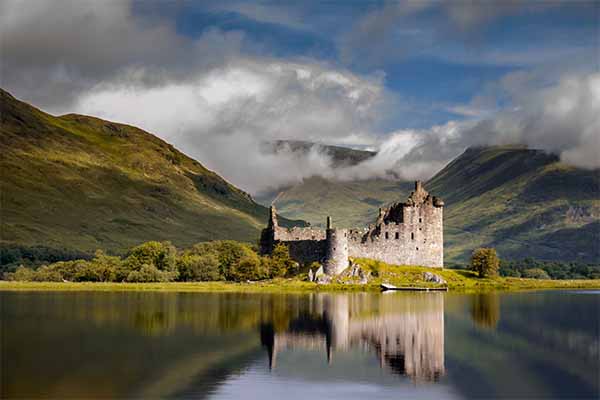
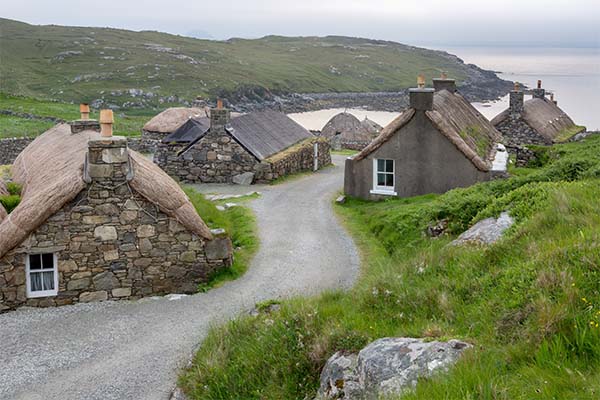

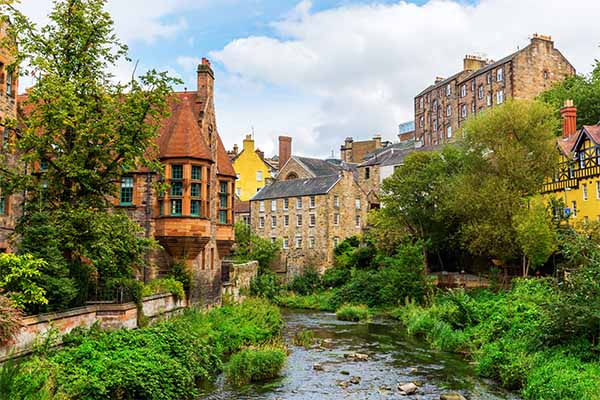


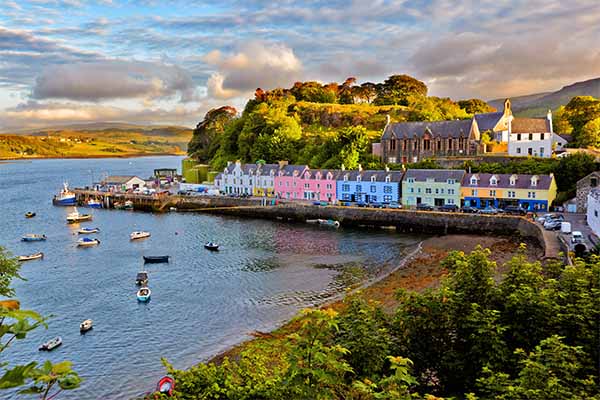
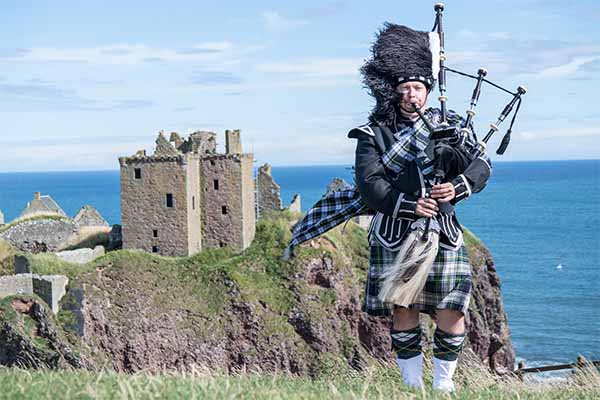
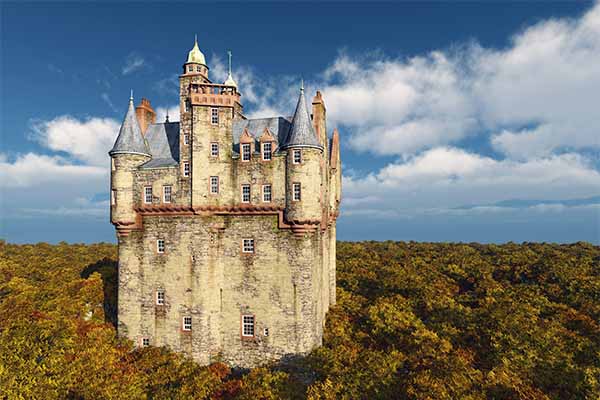

Scotland
Well known for its golf and castles, Scotland is the most northern country in the UK, and has over 790 offshore islands as well. The mountain wilderness and surrounding water and lakes make for incredible outdoor adventures and hikes. It’s also one of the best places in the world for stargazing, as you can spot the famous Northern Lights there in the right conditions. And we can’t talk about Scotland without mentioning the beautiful backdrop of the Highlands, with their rugged beaches, bagpipes, and natural wildlife. There’s no better place to play a round of golf than the original course in St. Andrews, to taste the local taps and Edinburgh charm on a pub walk, or watch the famous Jacobite Steam Train cross the Glenfinnan Viaduct.
Did You Know?
- The Lach Ness monster, otherwise known as “Nessie” is said to be still alive and well in Scottish Highlands.
- Scotland has the highest population of redheads in the world.
- Popular Scottish words used throughout the country include wee (little), dram(drink) and skint (broke).
- Edinburgh, the capital of Scotland, was built on a volcano.
- Scotland’s national instrument, the Highland bagpipes, are played at almost every ceremonial event throughout the country.
- Historians believe that the bagpipe instrument originates from ancient Egypt.
- There are over two thousand castles in Scotland
- Scotland’s national animal is the unicorn.
- The Scots invented the game of golf.
- The national food Haggis is banned from being imported into the US.
Travel Tips
If you’re from a European Union (EU) country (https://www.gov.uk/eu-eea), you do not need a visa and can stay in Scotland for any length of time. Otherwise, you need a passport (or National Identity Card), that is valid during your entire stay in Scotland. For quicker entry through the UK border, you may join the Registered Traveller program (https://www.gov.uk/registered-traveller).
Scotland seasons mimic the US. However, you’ll discover that the weather can change from sunshine to rain fairly quickly. The summer months of June-August usually run about 61F on average, while it is about 40F in the winter months. In general, it doesn’t get too cold or too hot there, but it’s often wet. “Today’s rain is tomorrow’s whiskey,” as they say. No matter what time of year you’re traveling there, it’s recommended you pack layers to wear, even in the summer. Waterproof outerwear and footwear is key.
The Scots have their own Pound notes, which may be used throughout the UK. If you’re traveling within the EU, you may bring in as much cash as you want – other entries need to claim anything over €10,000. There are thousands of cash machines, and cards are accepted in most cities. However, in many of the smaller communities, the cash machines are in the local village shops and centers, and accessed only during open hours. Consider having some cash with you, just in case. And if you are from outside the EU, you can reclaim the sales tax on your purchases!
Getting around Scotland is fairly easy with their public transport, ScotRail, and they have a Travel Pass available that covers most trains, buses, and ferries for several travel days. If you decide to drive yourself, you should know that you’ll need to drive on the left side of the road – and every driver there needs insurance coverage! Also be aware of the many roundabouts that are on the roads, as a common alternative to intersections.